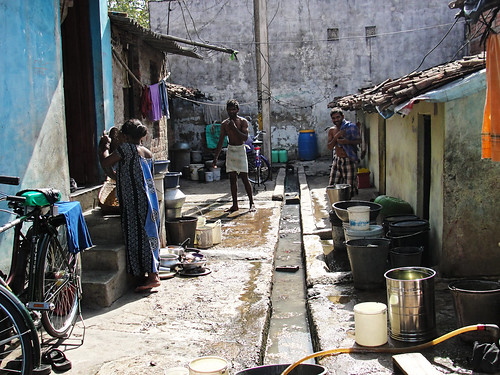Urban Poor Living in Slums: A Case Study of Raipur City in India
The document titled “Urban Poor Living in Slums: A Case Study of Raipur City in India” provides an in-depth analysis of the socio-economic conditions of slum dwellers in Raipur, the capital of Chhattisgarh, India. It highlights the challenges faced by the urban poor, emphasizing that slums are not merely a byproduct of urbanization but a significant manifestation of urban poverty.
Overview of Slum Conditions
Raipur has experienced rapid urbanization, leading to an increase in the urban population and a corresponding rise in slum areas. The study identifies that approximately 30-40% of India’s urban population resides in slums, with Raipur being no exception. The slums are characterized by overcrowding, inadequate housing, and poor sanitation facilities, which contribute to a deteriorating quality of life for residents. The document notes that slum settlements often develop around city centers, where wealthier citizens have abandoned properties, allowing poorer populations to occupy these areas.
Socio-Economic Status
The research indicates that slum dwellers in Raipur face numerous socio-economic challenges. Many residents engage in low-paying jobs such as garment work, domestic help, and street vending. The average food expenditure constitutes a significant portion of their income—between 61% to 64%—leaving little for other necessities. The study reveals that many families live on an annual income between 6,000 to 10,000 Rupees, which is insufficient for basic living standards.
Health Issues
Health status living in slums residents is alarming. The lack of access to clean water and sanitation facilities has led to a prevalence of waterborne diseases and other health issues such as allergies and skin disorders. The document underscores that the socio-economic status of these individuals directly affects their health outcomes, making them more susceptible to epidemics and chronic health conditions.
Urbanization and Environmental Challenges
The rapid growth of slums has also resulted in significant environmental degradation. Industrial pollution and increased traffic contribute to the deteriorating physical environment. Despite government regulations aimed at controlling pollution, little progress has been made in reducing environmental hazards within slum areas. The study emphasizes that the urban poor are often left vulnerable due to inadequate infrastructure and public services.
Need for Integrated Development
The authors argue for the necessity of integrated development programs tailored specifically for slum areas. They advocate for initiatives like the Integrated Slum Development Programme (ISD), which aims to incorporate slums into the broader urban planning framework. This approach would involve engaging slum residents in the planning process to ensure their needs are met effectively.
Community Engagement and Solutions
The research highlights the importance of community-managed programs over administration-led initiatives. It suggests that empowering local communities can lead to more sustainable solutions for improving living conditions in slums. Increased awareness about hygiene and preventive health measures is crucial for reducing health risks among residents.
Conclusion
In conclusion, the case study of Raipur’s slums illustrates a complex interplay between urban poverty, socio-economic status, health challenges, and environmental degradation. The findings call for urgent action from both government and civil society to address these multi-dimensional issues comprehensively. By focusing on integrated development strategies and fostering community participation, there is potential for significant improvement in the living in slums conditions0 of urban poor populations in Raipur. This summary encapsulates the critical insights from the document while reflecting on the broader implications for urban policy and social welfare programs aimed at alleviating poverty among slum dwellers.

